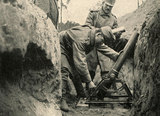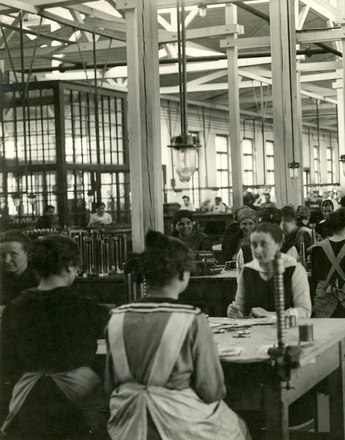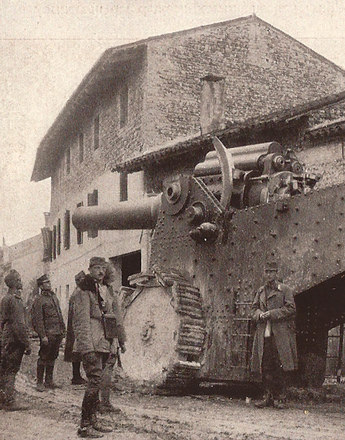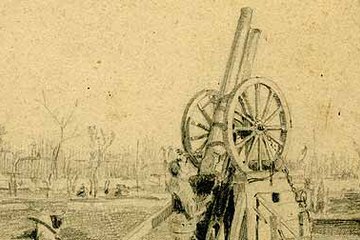An Effective Addition: Hand Grenades and Mortars
Hand grenades, mortars and howitzers were particularly used when the enemy could not be hit with direct fire. Despite the fact that the military knew of this area of application the industrial production in the Austro-Hungarian Empire of this weapon only began one year after the beginning of the war.
The predecessors of the modern hand grenade were already used for military purposes since the Middle Ages. It was usually a hollow body made of clay, glass or metal filled with conflagratory materials or gun powder that was ignited by means of a fuse. The discovery of new explosives led to the replacement of gun powder towards the end of the 19th century. The rather primitive fuse ignition was retained for the time being.
The hand grenade or rather its predecessors had been in use for a long time already. They were used in particular when the enemy could not be fired at directly. This happened for example in the siege warfare of the 17th century that represented early forms of the later trench warfare in which the sappers dug their way towards the defended fortresses.
From the mid 19th century onwards the advancing developments in warfare lead to a renaissance of hand grenades. The more and more accurate and increasing fire power of guns forced the soldiers to entrench themselves into the ground as a protection against enemy fire. As it wasn't possible any more to hit the entrenched soldiers with direct fire there was a call for weapons that allowed the enemy trenches to be penetrated with the help of high angle fire. In this regard the hand grenade was increasingly deployed again – thus in the Crimean War (1853-1856), in the American Civil War (1861-1865) and in particular in the Russo-Japanese War (1904-1905).
Even though it could not have escaped the notice of the Great Powers there was no attempt in this area for new acquisitions or innovations for this type of weapon; quite the opposite, existing material was discarded in the course of time. This was why the infantry of the Imperial Army had to make do with improvisations at the beginning of the war in 1914. The industrialised mass production of modern hand grenades with a fitted time or impact fuse was only introduced in 1915. Yet in trench warfare the hand grenade proved to be indispensable. Thus it was stated in the brochure 'Auxiliary means for the training for throwing hand grenades' that was issued by the Austro-Hungarian War Office: "It is difficult to get at the enemy in close-range attack with a gun […] when he is well covered in the trenches, due to the speed of the ballistic trajectory and because the projectiles cannot get through the earth wall […]. […] Thus the hand grenade that, when thrown steeply, circumvents obstacles that try to confront it, is the most qualified to put the enemy in the trenches out of action. […] Thus in trench warfare the emphasis shifts from the gun […] to the hand grenade."
As the hand grenades were thrown into enemy territory by sheer manpower it had its limits concerning its cruising radius and the incorporated explosives. As the Imperial armaments industries until then had never developed grenade launchers or mine throwers, the soldiers compensated for the lack of these light high angle fire weapons by constructing improvised grenade launchers. But in the course of the war the industry delivered in addition these indispensable weapons: with the 'light mortar' it was possible to fire off explosive bombs weighing 1 to 2 kg with a range of 500 metres, with the 'medium mortar' explosive charges of up to 20 kg with a range of 600 metres.
In a report issued by the Imperial Army Command one could read about the experiences in the trench warfare with the mine throwers that had been specially developed for the infantry: "The mortars form a very important and effective addition to the artillery. They have to be used everywhere where the highest possible effect needs to be achieved. […] The mortars put under fire positions near the trenches that need to be shaken, whilst the artillery creates defensive walls to both sides of these positions and close behind."
Craig, Philip: Enzyklopädie der Handfeuerwaffen, Köln 1995
Feldbauer, Franz: Die Glas-Handgranaten der Grenadiere der Fürsten Esterhazy im Zeughaus der Burg Forchtenstein, in: Zeitschrift der Gesellschaft für Historische Waffen- und Kostümkunde (Nr. 50) 2012, 181-220
Ortner, M. Christian: Die k. u. k. Armee und ihr letzter Krieg, Wien 2013
Quotes:
"It is difficult to get at the enemy...": Behelf für die Ausbildung im Handgranatenwerfen, K. u. k. Kriegsministerium, Abt.5 (Hrsg.), Nr.7000/17, Wien 1917, o.S; online: http://heeresgeschichten.at/infanterie/handgranate_ausbildung/handgranat... (18.6.2014) (Translation)
"The mortars form a...": Erfahrungen der Armeegruppe v. Eben im Stellungskampf. Ia Gruppe 334, K. u. k. Armeeoberkomando, Op.Br.: 32.698, Wien 1916, o.S; online: http://heeresgeschichten.at/infanterie/voneben/erfahrungen_von_eben.pdf (18.6.2014) (Translation)
-
Chapters
- Explosive Discoveries. From Gunpowder to TNT
- From the Lorenz Gun of Königgrätz to the Ordnance Weapon M1895
- Artillery I.: Technical Innovation and late Modernisation
- Artillery II: The Creeping Barrage, Barrage and Curtain Fire
- The high rate of fire of the machine gun: concerning the Mitrailleuse, the Gatling Gun, the Maxim Gun and the Schwarzlose MG
- An Effective Addition: Hand Grenades and Mortars
- The Imperial Arms Industry





